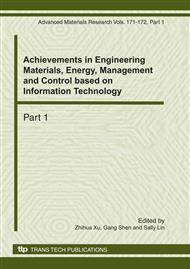p.385
p.389
p.394
p.399
p.403
p.408
p.412
p.416
p.421
A Multiple Classifier System for Functional Classification of G Protein-Coupled Receptors
Abstract:
G protein-coupled receptors (GPCRs) are the largest protein super family in the human body and play a significant role in the pharmaceutical industry as drug targets. Although the deep research in GPCRs is continuing to grow, the study on their structures and functions is limited, for it is difficult and complex for the researchers to obtain purified membrane protein structures of GPCRs. Currently, how to get the structures of GPCRs and how to analyze them are the most important issues in modern molecular biology and medicine. We adopted multi-classifier method to deal with the problem of functional classification of GPCRs. Based on class hierarchy, the different data sets for training the classifiers were formed, and the diversity and accuracy were considered together in selecting the classifier sets. The dynamic weighted fusion rule was used to combine the classifiers. Experimental results show the effectiveness of this multi-classifier system.
Info:
Periodical:
Pages:
403-407
Citation:
Online since:
December 2010
Authors:
Price:
Сopyright:
© 2011 Trans Tech Publications Ltd. All Rights Reserved
Share:
Citation:


